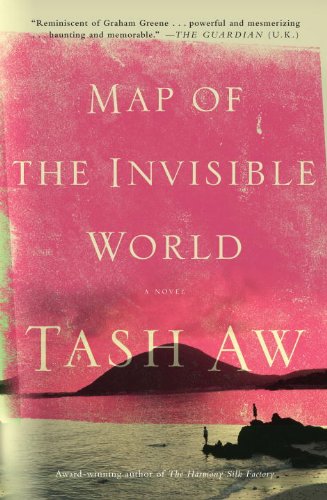Map of the Invisible World
Adam is an orphan, several times over. First, he and his older brother were left at an Indonesian orphanage; then his brother, Johan, was adopted, and now, his Dutch-born adoptive father, Karl, has been taken away by the military in an act of “repatriation.” Sixteen-year-old Adam’s struggle to remember his past, and to determine his future, is at the center of this novel, which teems with the strife and turbulence of Indonesia in the mid-1960s.
Adam seeks the help of Margaret Bates, an anthropologist teaching in Jakarta, whose photo he found among Karl’s papers. With Adam’s arrival, Margaret is reminded of a past life, when she was young and in love with Karl, who was one of many European artists who came to Indonesia before World War II. She must call in favors with other men from her past, not only to locate Karl, but also to escape from an increasingly dangerous life in Jakarta. Margaret’s navigation of the political and military minefields mirrors Adam’s emotional searching for home and emotional stability. Unknown to them, Adam’s brother Johan is engaged in his own quest to confront his inner demons.
These invisible worlds are deftly mapped by Aw, as is the history of Indonesia; from centuries of Dutch rule to Japanese invasion to efforts at self-rule while being influenced by forces both Western and Communist, the tumult of the country and its people is well documented. Historical figures such as President Sukarno make appearances, and incidents such as the military strikes and rioting crowds are vividly related. The country is more than just a backdrop to the struggles of the characters we meet; it is itself a multiplicity of characters trying to make its way into an ambiguous future.










